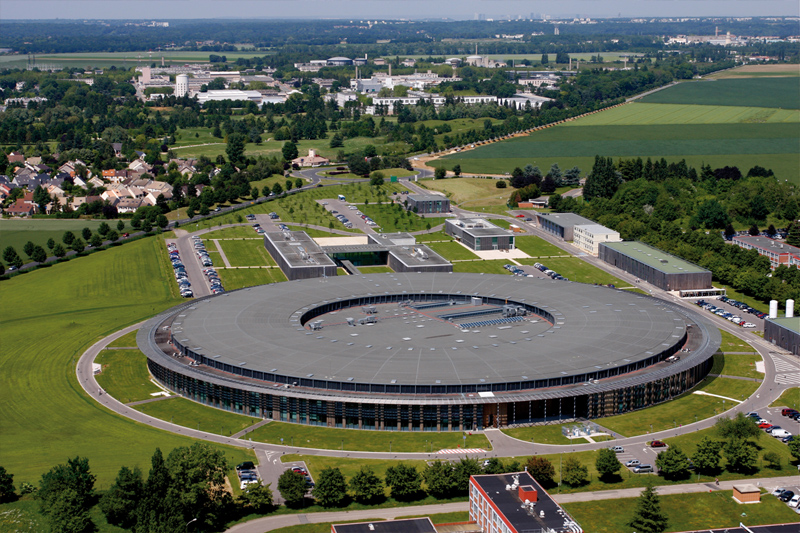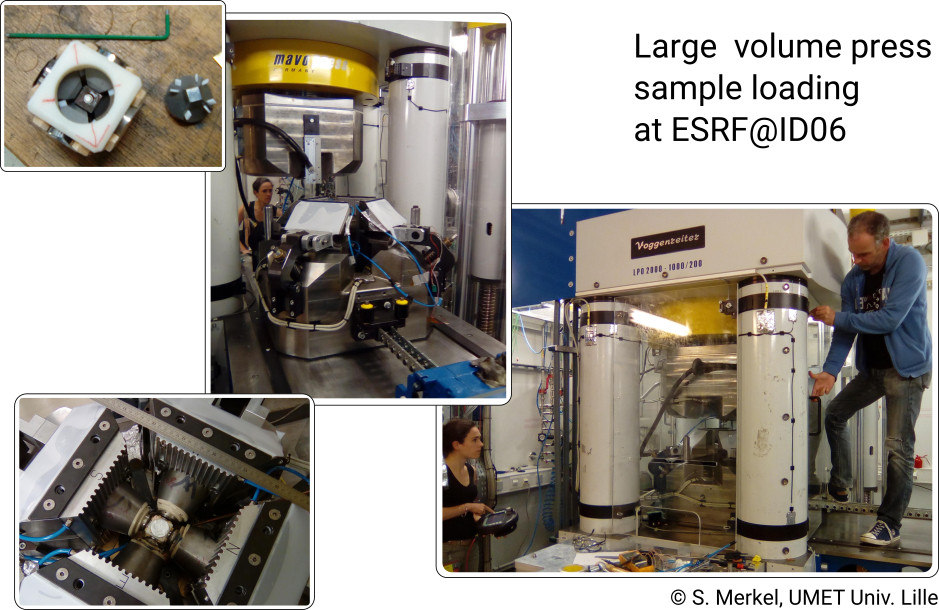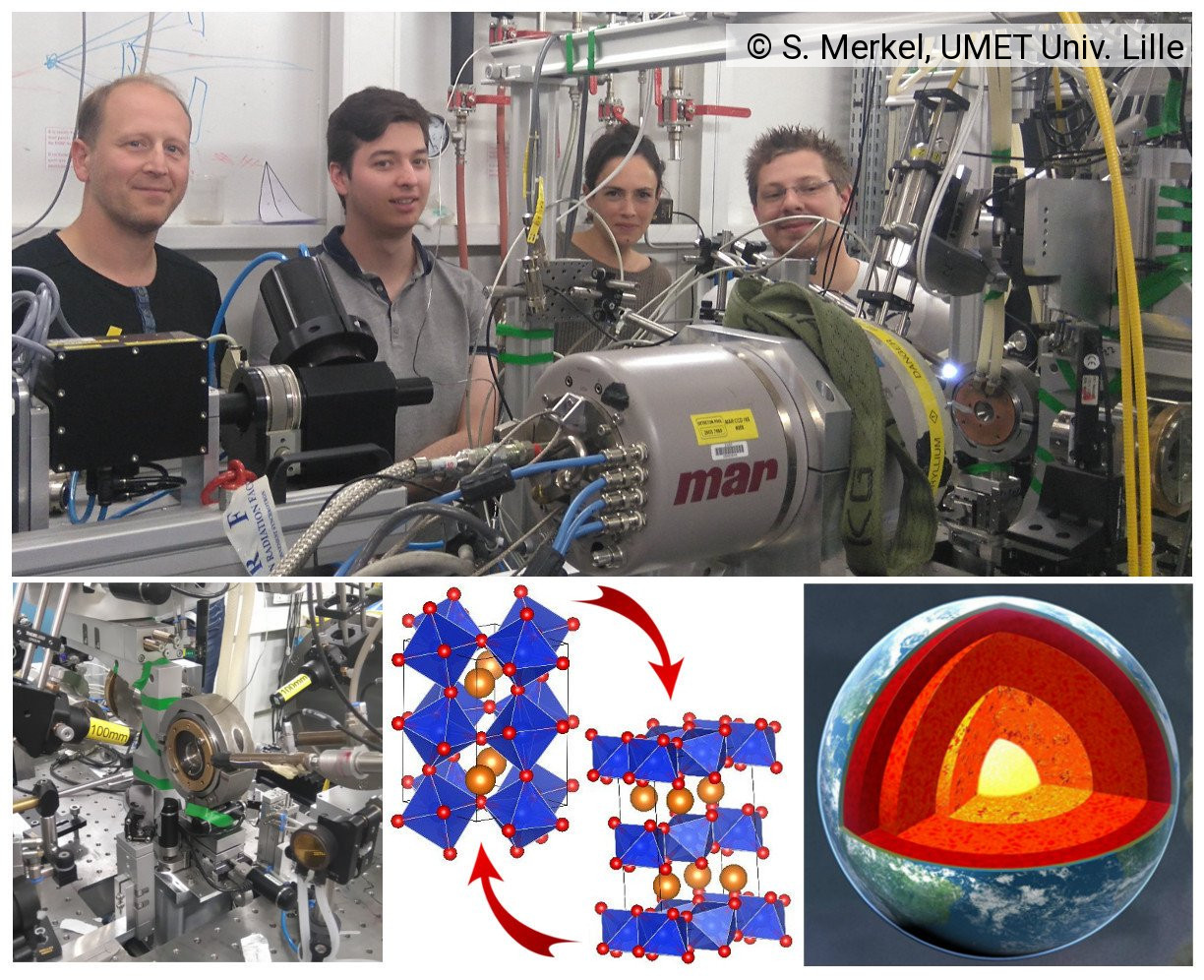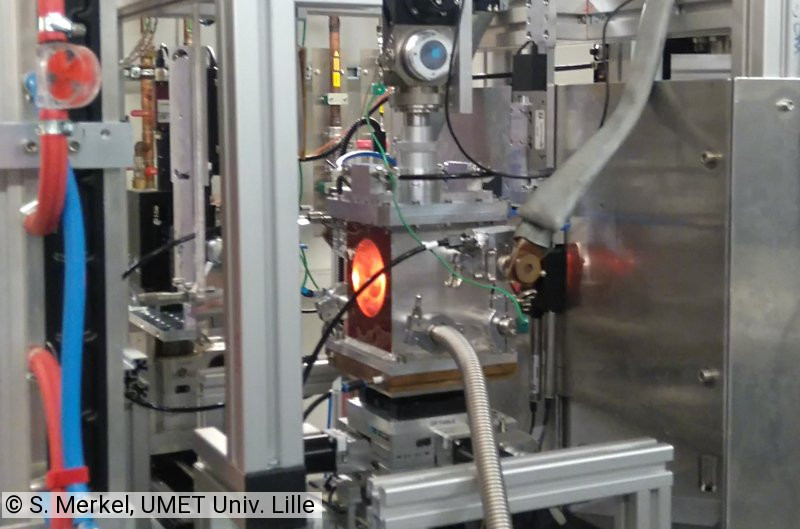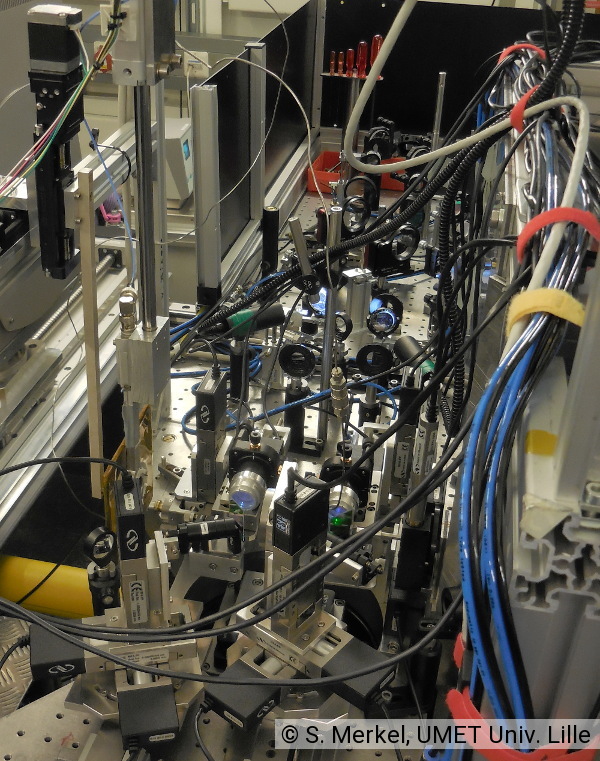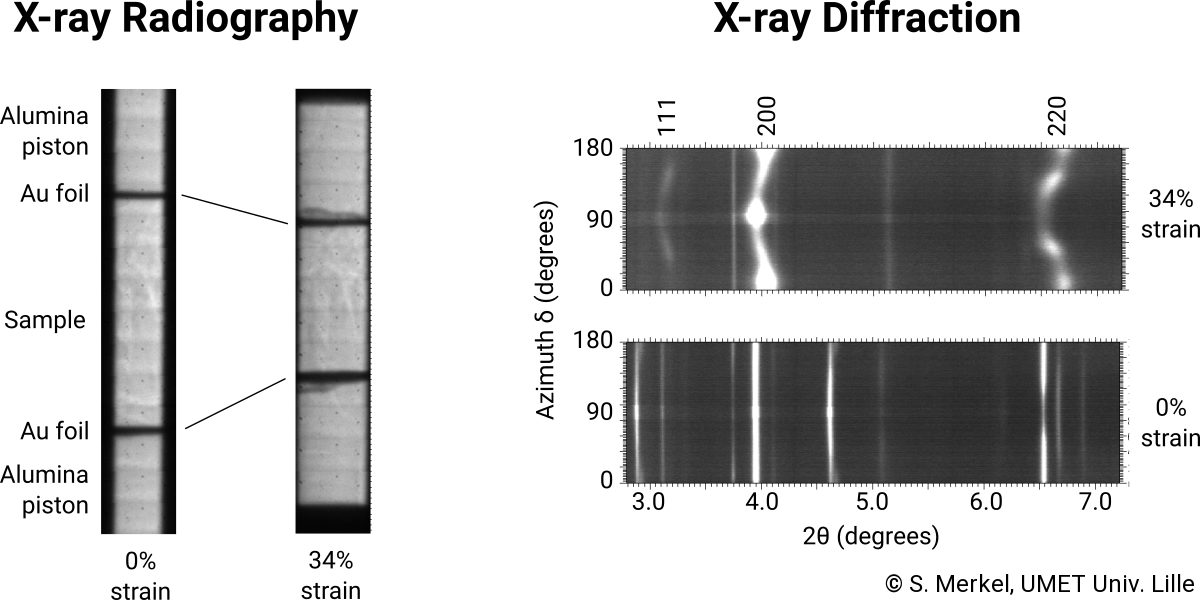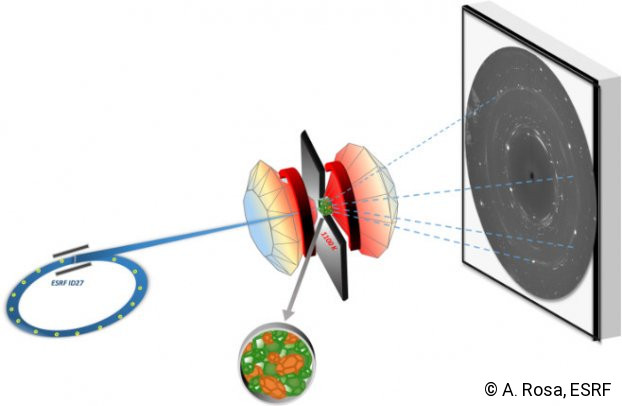UMET - High Pressure On Large Scale Facilities
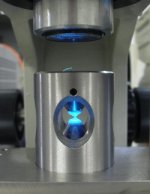
Contacts:
Research group:
See also:
The expertise of the Earth and Planetary Materials group for the study of materials and minerals under extreme conditions of pressure and temperature relies on mainly two techniques: diamond anvil cell and large volume press experiments, as well as advanced chararcterization techniqes involving X-ray sources at large scale facilities.
See also |
Large scale facilities >
Large scale research facilities are national or international centers dedicaed to experiments that would not be viable in smaller laboratories. For high pressure reseach, light sources such as synchrotrons are particularly useful as they provide intense and well-focused radiation that can be used for in-situ measurements, while the sample is under extreme conditions of pressure and temperature.
In our work, we mostly use the following sources:
- the European Synchrotron Radiation Facility in Grenoble
- PETRA-III in Hamburg
- the Advanced Photon Source in the United States
- SOLEIL near Paris.
High Pressure devices on large scale facilities >
Diamond anvil cells, Paris-Edinburgh, and multi-anvil presses are often installed on dedicated beamlines with the matching measurement, heating, and positioning systems. Those beamlines also provide environements allowing the users to prepare their sample prior to the experiment.
Types of measurements >
In our case, we mostly use large scale facilities beamlines producing x-rays with which we perform diffraction, radiography, and tomography. We study the physical properties of our samples, their crystallographic structures, microstructure, or plastic properties.
Sample contributions
- In a deformation experiment, the macroscopic deformation applied to the samples is measured using x-ray radiography. The applied stress is estimated using x-ray diffraction by quantifying the measured microscopic elastic strains. The sample texture is evaluated based on variations of diffraction intensities with orientation.
- F. Lin, N. Hilairet, P. Raterron, A. Addad, J. Immoor, H. Marquardt, C. N. Tomé, L. Miyagi, S. Merkel, Elasto-viscoplastic self consistent modeling of the ambient temperature plastic behavior of periclase deformed up to 5.4 GPa, Journal of Applied Physics 122 205902 (2017) [doi: 10.1063/1.4999951]
- C. Bollinger, P. Raterron, O. Castelnau, F. Detrez, S. Merkel, Textures in deforming forsterite aggregates up to 8 GPa and 1673 K, Physics and Chemistry of Minerals 43 409-417 (2016) [doi: 10.1007/s00269-016-0805-x]
- Multigrain diffraction allows tracking individual grains inside a material undergoing dynamic processes such as deformation or phase transformation. One can follow the evolution of the sample microstructure, in-situ and grain by grain. This allows, for instance, decipher transformation mechanisms between minerals.
- C. Langrand, N. Hilairet, C. Nisr, M. Roskosz, G. Ribárik, G. B. M. Vaughan, S. Merkel, Reliability of multigrain indexing for orthorhombic polycrystals above 1 Mbar: application to MgSiO3 post-perovskite, Journal of Applied Crystallography 50 120-130 (2017) [doi: 10.1107/S1600576716018057]
- A. D. Rosa, N. Hilairet, S. Ghosh, J. P. Perrillat, G. Garbarino, S. Merkel, Evolution of grain sizes and orientations during phase transitions in hydrous Mg2SiO4, Journal of Geophysical Research 121 (2016) [doi: 10.1002/2016JB013360]

